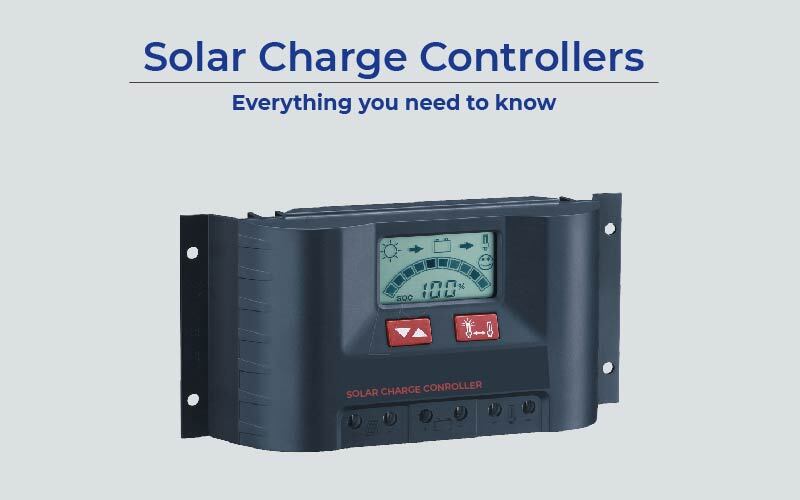A charge controller or regulator controls the rate at which electric current is drawn or added to the batteries. The primary function of a charge controller is to block reverse current and prevent your batteries from ovalong ercharging. They are available in stand alone mode or are integrated in a controlled circuitry with a battery pack or battery charger.
Blocking reverse current:
Solar panels at night may draw reverse current, although this value is small but can be easily prevented. The charge current is passed through a semiconductor (Transistor), which allows the flow of charge in only one direction. In the past there’d be electromagnetic coils connected to a relay switch which would shut down and prevent the flow of current in the reverse direction
Preventing Overcharge
A battery like everything else we know of has limits, when a battery is fully charged and cannot store any more charge and energy is still provided then the voltage goes high. Frequent cases may result in degradation of the battery, overheating, stressing of your appliances(Loads) and in some cases minor explosions. Ergo this is the primary function of a charge controller. The role of the charge controller is to understand the energy input it receives and control the amount of charge that the battery takes in, when the voltage drops then the battery is able to provide maximum possible charge. This is known as voltage regulation.
While some of the controllers work on an on/off switch which essentially stops or starts the battery charging, there are PWM controllers which bring down the voltage gradually. It functions on a 2 stage regulation model. Initially the battery is charged at a safe maximum level to full charge, then the battery is sent into a finish level. This model helps in cases where batteries perform in excessive voltage fluctuations preventing water loss and stress to the battery. The determination of these set points is the basis of the MPPT (Maximum power point tracking) system.
Integrated Charge Controllers
A charge controller can end up containing many electrical components, these can be encapsulated into an IC or integrated circuit called Charge Controller IC. Although their relevance to solar is currently limited.
Do give our blog a read for all your solar-related questions. You can also check out other interesting updates on solar on our Facebook page (facebook.com/zunroof)
Reach out to us by filling the form below:

